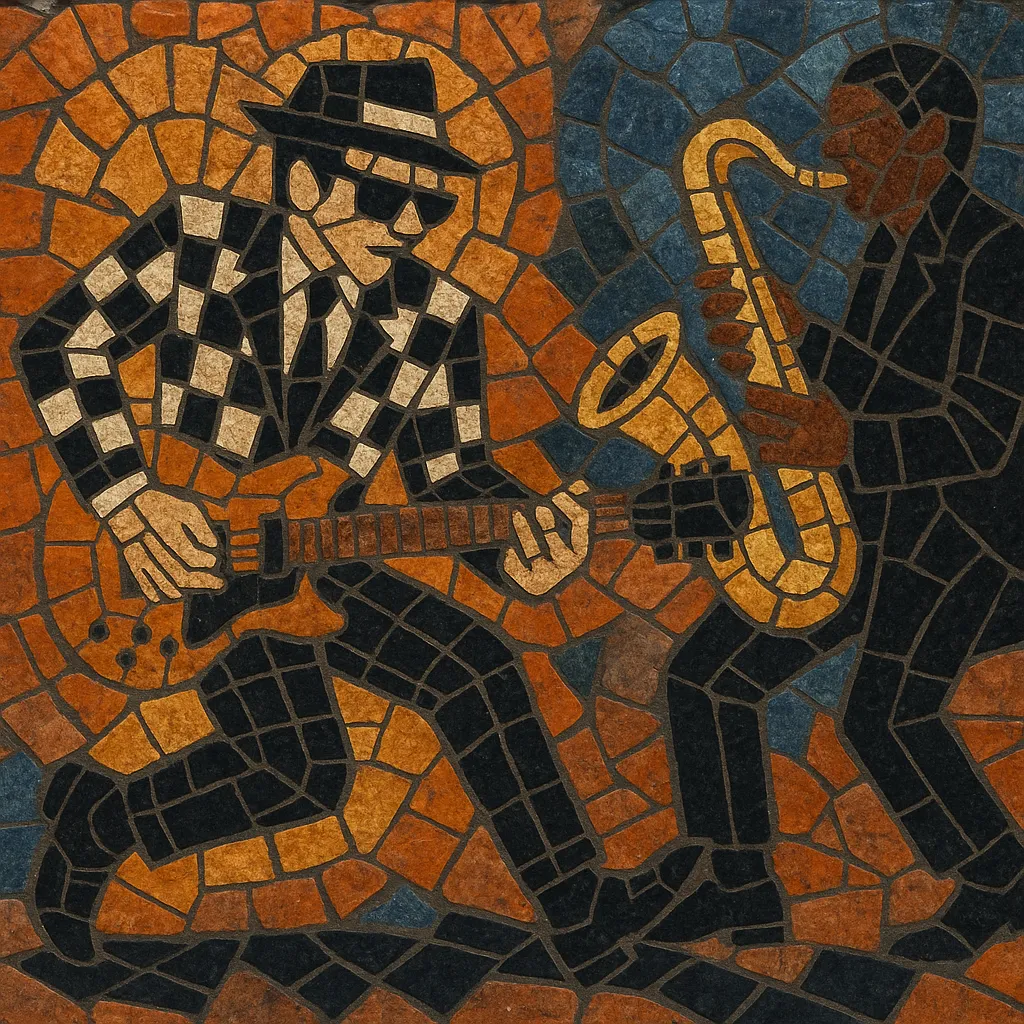
Third wave ska is the late-1980s to 1990s revival and reinvention of Jamaican ska, energized by punk rock and American alternative culture. It keeps the signature off‑beat “skank” guitar and punchy horn lines, but often accelerates tempos and borrows punk’s drive, sing‑along choruses, and DIY ethos.
While rooted in Jamaican ska, rocksteady, and reggae, third wave ska also filters those traditions through 2 Tone’s multicultural stance and brisk rhythmic feel. The result ranges from bright, danceable pop-ska to aggressive ska‑punk and skacore, with bands frequently switching between up-tempo punk sections and laid-back reggae breaks within a single song.
Third wave ska crystallized in the United States in the late 1980s as musicians inspired by Jamaica’s 1960s ska and the UK’s 2 Tone movement fused off‑beat rhythms with punk rock urgency. Early US scenes in places like Boston, New York, Southern California, and the Midwest nurtured touring circuits, small labels, and a horn-driven club sound that favored high energy and crowd participation.
The 1990s saw a commercial breakthrough. Bands such as The Mighty Mighty Bosstones, No Doubt, Reel Big Fish, and Less Than Jake scored radio and MTV exposure, bringing off‑beat guitar skanks, call-and-response horn hooks, and pogo-friendly mosh pits to mainstream rock audiences. Meanwhile, parallel paths emerged: skacore blended hardcore punk with ska rhythms, while traditionalist bands like Hepcat emphasized rocksteady and early ska aesthetics within the same wave.
Third wave ska spans a spectrum—from pop-leaning, hooky singles with bright brass arrangements to aggressive, fast ska‑punk with shouted gang vocals. Live shows became central to the genre’s identity, emphasizing dancing, stage dives, and a celebratory, communal atmosphere. DIY touring networks and college radio were crucial in connecting regional scenes across the US and beyond.
By the early 2000s, mainstream attention waned as broader rock trends shifted. However, the wave’s infrastructure—independent labels, festival culture, and a committed fanbase—helped ska persist. Subsequent revivals, the continued popularity of ska‑punk and skacore, and new generations of bands (including technically sophisticated horn writing and modern production) attest to third wave ska’s lasting impact on punk-adjacent and reggae‑influenced rock.

